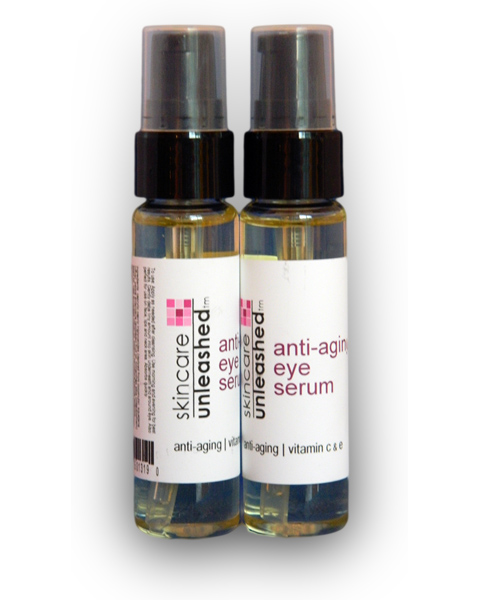Studies of CoEnzyme Q10 (CoQ10) Benefits on the Skin CoEnzyme Q10 (CoQ10) Benefits on the Skin Studies Biofactors. 2009 Sep-Oct;35(5):435-41. Coenzyme Q10
protects against oxidative stress-induced cell death and enhances the synthesis
of basement membrane components in dermal and epidermal cells.
Muta-Takada K,
Terada T, Yamanishi H, Ashida Y, Inomata S, Nishiyama T, Amano S. Shiseido
Research Center, Yokohama, Japan. [email protected]
Abstract Coenzyme Q10 (CoQ10), which has both energizing and anti-oxidative effects, is also reported to have anti-aging action, e.g., reducing the area of facial wrinkles. However, the mechanism of its anti-aging activity is not fully established. Here, we examined the effect of CoQ10 on human dermal and epidermal cells. CoQ10 promoted proliferation of fibroblasts but not keratinocytes. It also accelerated production of basement membrane components, i.e., laminin 332 and type IV and VII collagens, in keratinocytes and fibroblasts, respectively; however, it had no effect on type I collagen production in fibroblasts. CoQ10 also showed protective effects against cell death induced by several reactive oxygen species in keratinocytes, but only when its cellular absorption was enhanced by pretreatment of the cells with highly CoQ10-loaded serum. These results suggest that protection of epidermis against oxidative stress and enhancement of production of epidermal basement membrane components may be involved in the anti-aging properties of CoQ10 in skin. Copyright 2009 International Union of Biochemistry and Molecular Biology, Inc. PMID: 19753652 [PubMed - indexed for MEDLINE] Z Gerontol Geriatr. 1999 Apr;32(2):83-8. Studies as
to the Benefits of Coenzyme Q10 (CoQ10) on the Skin
Biofactors.
2008;32(1-4):245-55.
Aging skin
is functionally anaerobic: importance of coenzyme Q10
for anti-aging
skin care.
Prahl S, Kueper
T, Biernoth T, Wöhrmann Y, Münster A, R&D, Beiersdorf AG, Hamburg, Germany.
Abstract The functional loss of mitochondria represents an inherent part in modern theories trying to explain the cutaneous aging process. The present study shows significant age-dependent differences in mitochondrial function of keratinocytes isolated from skin biopsies of young and old donors. Our data let us postulate that energy metabolism shifts to a predominantly non-mitochondrial pathway and is therefore functionally anaerobic with advancing age. CoQ10 positively influences the age-affected cellular metabolism and enables to combat signs of aging starting at the cellular level. As a consequence topical application of CoQ10 is beneficial for human skin as it rapidly improves mitochondrial function in skin in vivo.
Biofactors.
2008;32(1-4):237-43.
Mechanisms
of inhibitory effects of CoQ10 on UVB-induced wrinkle formation in vitro and in
vivo.
Inui M, Ooe M,
Fujii K.
Tokiwa
Pharmaceutical Company Product Development, Japan.
Abstract Photodamaged skin exhibits wrinkles, pigmented spots, dryness and tumors. Solar UV radiation induces cyclobutane pyrimidine dimers (CPD) and further produces base oxidation by reactive oxygen species (ROS). ROS are thought to be a major factor to initiate the up-regulation of matrix metalloproteinases (MMPs) in keratinocytes and fibroblasts via activation of receptor proteins on the cell membrane of keratinocytes and fibroblasts, and to degrade fiber components in dermis, leading to wrinkle formation. Coenzyme Q10 (CoQ10) was reported to reduce ROS production and DNA damage triggered by UVA irradiation in human keratinocytes in vitro. Further, CoQ10 was shown to reduce UVA-induced MMPs in cultured human dermal fibroblasts. We speculated that UVB radiation-induced cytokine production in keratinocytes may be inhibited by CoQ10, resulting in the reduction of MMPs in fibroblasts leading to wrinkle reduction. Our in vitro studies showed that UVB-induced IL-6 production of normal human keratinocyte (NHKC) decreased in the presence of CoQ10. Furthermore, MMP-1 production of fibroblasts cultured with the medium containing CoQ10 collected from UVB-irradiated NHKC significantly decreased during 24 h culture. In the clinical trial study, we found that the use of 1% CoQ10 cream for five months reduced wrinkle score grade observed by a dermatologist. Taken together, our results indicate that CoQ10 may inhibit the production of IL-6 which stimulate fibroblasts in dermis by paracrine manner to up-regulate MMPs production, and contribute to protecting dermal fiber components from degradation, leading to rejuvenation of wrinkled skin. PMID: 19096121 [PubMed - indexed for MEDLINE] [Modulation
of oxidative stresses in human aging skin]
[Article in
German]
Blatt T, Mundt
C, Mummert C, Maksiuk T, Wolber R, Keyhani R, Schreiner V, Hoppe U,
Schachtschabel DO,
Stäb F. Paul
Gerson Unna Forschungszentrum Beiersdorf AG, Hamburg.
Abstract Oxidative stress (UV irradiation, free radicals) plays a significant role in aging. Coenzyme Q10 (CoQ10) and exogenously applied antioxidants can significantly reduce the formation of oxidative stress with increasing age. In our in vitro and in vivo experiments concerning the parameters of ultra-weak photon emission (UPE), intracellular thiol status, mitochondrial membrane potential and cell vitality, we demonstrated a diminished resistance in keratinocytes of old donors against UV irradiation. This reduced epidermal resistance against oxidative stressors, i.e. UV irradiation, can be improved by topical application of CoQ10 and antioxidants like alpha-glucosylrutin (15). Furthermore, our in vivo investigations show that wrinkles around the region of the eyes ("crow feet") could be reduced by long-term application of CoQ10.YOU CAN FIND CoEnzyme Q10 (CoQ10) IN OUR Conditioned By Nature Anti-Aging Eye Serum   10/15/2015 |